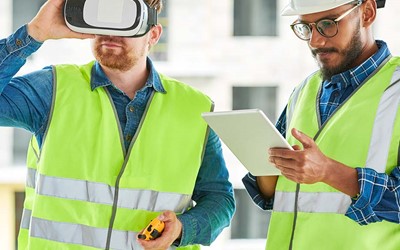Digital First Approach to Workplace Safety - Creating Compelling Learning and Assessments using VR
To ensure workplace safety, providing your people with opportunities to develop the skills they need for their role is key. You also need to confirm they have mastered those skills. So how can VR learning and assessment help?
Posted 23 September 2020
How VR helps
Virtual Reality (VR) will enable you to create compelling learning and assessment experiences that are engaging for your learners, are relevant to real work situations and provide a more accurate reflection of whether an individual has acquired the skills they need.
5 key reasons to use VR for learning and assessment
1. VR helps with on the job learning
Since the average worker has only 24 minutes per week to learn new things other than doing their job, any knowledge gaps they might have need to be dealt with at the point of need. Having snippets of scenarios available to participate in, allows the employee to practice before doing it for real.
2. An authentic experience
When we use VR, our brains think we are doing the activity for real, so we tend to learn and remember far more than just working through a paper exercise.
3. Try many times before doing something for real
Experiences are captured once and used many times, giving everyone a consistent environment, and the potential of running various scenarios. Building confidence and enhancing adaptability through VR helps develop core skills that stay with the employee.
4. Be inventive, use imagination
Changing the perception of training activities to experiences brings a more efficient training experience.
5. Measure compliance
Great training is the key to business success, having the analytics to show that a person is competent not just guessing answers is a big bonus in today’s compliance world.
VR Authoring with eNetReality
Our sister company, eCom USA, have recently launched eNetReality a VR authoring tool that gives you everything you need to create and deliver your own VR learning and assessment experiences for your workforce to ensure workplace safety – no coding required. You can upskill your learners by placing them inside the simulated environment you have created enabling a fully immersive experience of a 360° environment they can interact with.
Recent Posts
Is your work changing, or just your tools? A question for the modern workforceWhat is competency? And why it matters in the workplace
Bridging the integrity gap: A proactive approach with eNetEnterprise
Proving Learning Works: Trends Driving Workplace Training in 2025
Creating assessment questions with iQ, part of eNetAssess – Frequently Asked Questions


